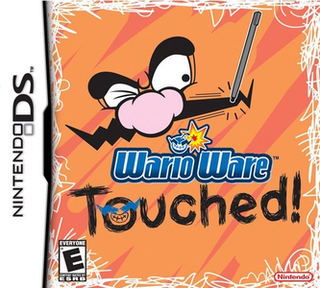
WarioWare: Touched! is a minigame compilation party video game released by Nintendo for the Nintendo DS. The fourth installment of the WarioWare series, and the first of three on the Nintendo DS, the game involves rapidly completing "microgames" — simple minigames lasting extremely short periods of time — as quickly as possible. The microgames are exclusively controlled with the Nintendo DS's touchscreen and microphone.

Nintendo Wi-Fi Connection is a defunct online multiplayer gaming service run by Nintendo that formerly provided free online play in compatible Nintendo DS and Wii games. The service included the company's Wii Shop Channel and DSi Shop game download services. It also ran features for the Wii and Nintendo DS systems.
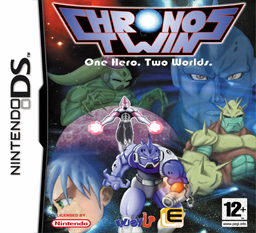
Chronos Twins, known in the PAL region as Chronos Twin, is an action-adventure game developed by Spanish studio EnjoyUP Games, released in the PAL region in 2007. It was also released in North America on January 18, 2010 and in Europe on May 14, 2010 as a download for the Nintendo DSi system. The game puts a different perspective on time travel than most games. Instead of revisiting an area in two different times, both screens show the same setting during two eras as gamers explore the land with a present-day hero. Chronos Twins was originally planned for release for Game Boy Advance, but after the rise of the Nintendo DS, the game's development switched to that system. An enhanced version for the Wii console entitled Chronos Twins DX was released in North America as a WiiWare download one week prior to the Nintendo DSi release. It was later released in the PAL region for WiiWare on April 2, 2010.

MySims is a video game developed by EA Redwood Shores and published by Electronic Arts as a spin-off to Maxis' The Sims franchise for the Wii and Nintendo DS in September 2007, re-released for Microsoft Windows and mobile phones in 2008, and for BlackBerry in 2009.
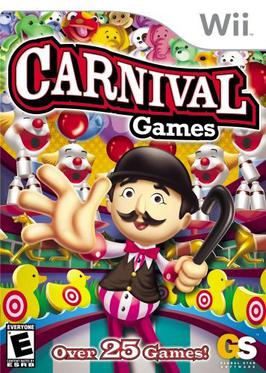
Carnival Games is a video game for Wii, Nintendo DS and iPhone, with a re-release for Nintendo Switch. It was the last game published by Global Star Software, before it was absorbed into Take-Two Interactive.
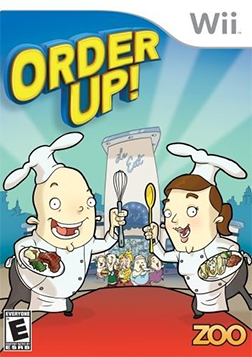
Order Up! is a cooking simulation-styled mini-game compilation developed by SuperVillain Studios and published by Zoo Games and Funbox Media. It was released on July 22, 2008 in North America, October 23 in Australia, and October 24 in Europe for the Wii. An enhanced port titled Order Up!! was released for the PlayStation 3 and Nintendo 3DS on December 9, 2011 in Europe and June 21, 2012 in North America. The game was released on iOS and Android as Order Up!! To Go.

Tetris Party is a puzzle video game by Hudson Soft for WiiWare. An installment of the Tetris series, the game supports the use of Miis and the Wii Balance Board, and features both local and online multiplayer in addition to several single-player modes unique to the game.

Picopict, known as Pictobits in North America and as Pictopict in Australia, is a puzzle video game developed by Skip Ltd. and published by Nintendo for the Nintendo DSi's DSiWare digital distribution service. It is one of seven games released for the DSi's Art Style series of video games. It was announced on January 26, 2009, was released two days later alongside Somnium, another Art Style game, and was released in North America and PAL regions in the same year, on May 18 and May 22 respectively. In Picopict, players use the touchscreen to move coloured blocks into a formation, such as a four-block line or a 2x2 square. This contributes to an 8-bit image, which consist of various Nintendo Entertainment System (NES) characters, such as Mario, Link, and Bowser.
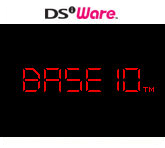
Code, known as Base 10 in North America and Decode in Japan, is a puzzle video game developed by Skip Ltd. and published by Nintendo for the Nintendo DSi's DSiWare digital distribution service.

Aquia, known as Aquite in Europe and Aquario in Japan, is a puzzle video game developed by Skip Ltd. and published by Nintendo for the Nintendo DSi's DSiWare digital distribution service. It was released at the launch of the Nintendo DSi and DSiWare service on April 5, 2009 in North America.

Boxlife, known as Hacolife in Japan, is a puzzle video game developed by Skip Ltd. and published by Nintendo for the Nintendo DSi's DSiWare digital distribution service.

Mighty Flip Champs! is a puzzle-platform game, developed and published by WayForward Technologies for the Nintendo DSi's DSiWare digital download service. It was released on June 1, 2009, in North America and on November 27 in the PAL regions. The developers took inspiration from multiple sources, including the video games Wendy: Every Witch Way and The Legend of Zelda: A Link to the Past. In it, players control Alta, a girl who has to reach a fishman by flipping between areas until she can reach him. Since its release, Mighty Flip Champs! received all-around positive reception, while also being called one of the best video games for the DSiWare service. It is the first game in the Mighty series, and is followed by Mighty Milky Way, Mighty Switch Force! and Mighty Switch Force! 2.

Dr. Mario Express, known in PAL regions as A Little Bit of... Dr. Mario, is a Mario action puzzle video game published by Nintendo. The game was released as a DSiWare title for the Nintendo DSi platform. Dr. Mario Express was released as a launch title for the DSiWare service in Japan on December 24, 2008, and was released in both North America and PAL regions in 2009. The game was developed by Arika, which had also created Dr. Mario Online Rx for WiiWare.

Mario vs. Donkey Kong: Minis March Again! is a 2009 puzzle-platform game developed by Nintendo Software Technology for the Nintendo DSi. The third game in the Mario vs. Donkey Kong series, it is a follow-up to Mario vs. Donkey Kong 2: March of the Minis. It is the first DSiWare game to feature a level editor in which players can create custom-made levels and send them to players on other devices via a wireless Internet connection.

The Nintendo DSi system software is a discontinued set of updatable firmware versions, and a software frontend on the Nintendo DSi video game console. Updates, which are downloaded via the system's Internet connection, allow Nintendo to add and remove features and software. All updates also include all changes from previous updates.
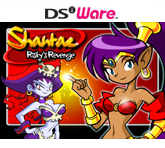
Shantae: Risky's Revenge is a platform video game developed by WayForward Technologies for the Nintendo DSi. The second installment in the Shantae series, Risky's Revenge is the sequel to the 2002 Game Boy Color video game Shantae, and follows series protagonist Shantae as she sets out to stop the ambitions of the nefarious pirate Risky Boots.

Frogger Returns is a game for the PlayStation 3, Nintendo DSi, and Wii by American developer Hijinx Studios. This game is purchased from the PlayStation Store, and it was available on the Wii Shop Channel before the service ended. The game was also released as DSiWare in North America on May 18, 2010.
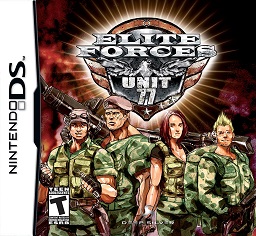
Elite Forces: Unit 77 is an action video game developed by Spanish studio Abylight and Gammick Entertainment for the Nintendo DS and DSiWare.
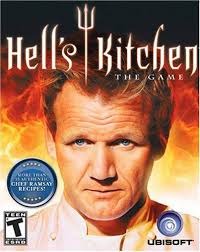
Hell's Kitchen is a time management cooking video game based on the reality competition show of the same name. It was developed by Ludia and published by Ubisoft. It features the host of the show, Gordon Ramsay as the A.I. and places the player as a chef under his guidance, while serving customers at the restaurant. It was initially released in September 2008 on the Nintendo DS, the Nintendo Wii, Microsoft Windows, and Mac OS.


















